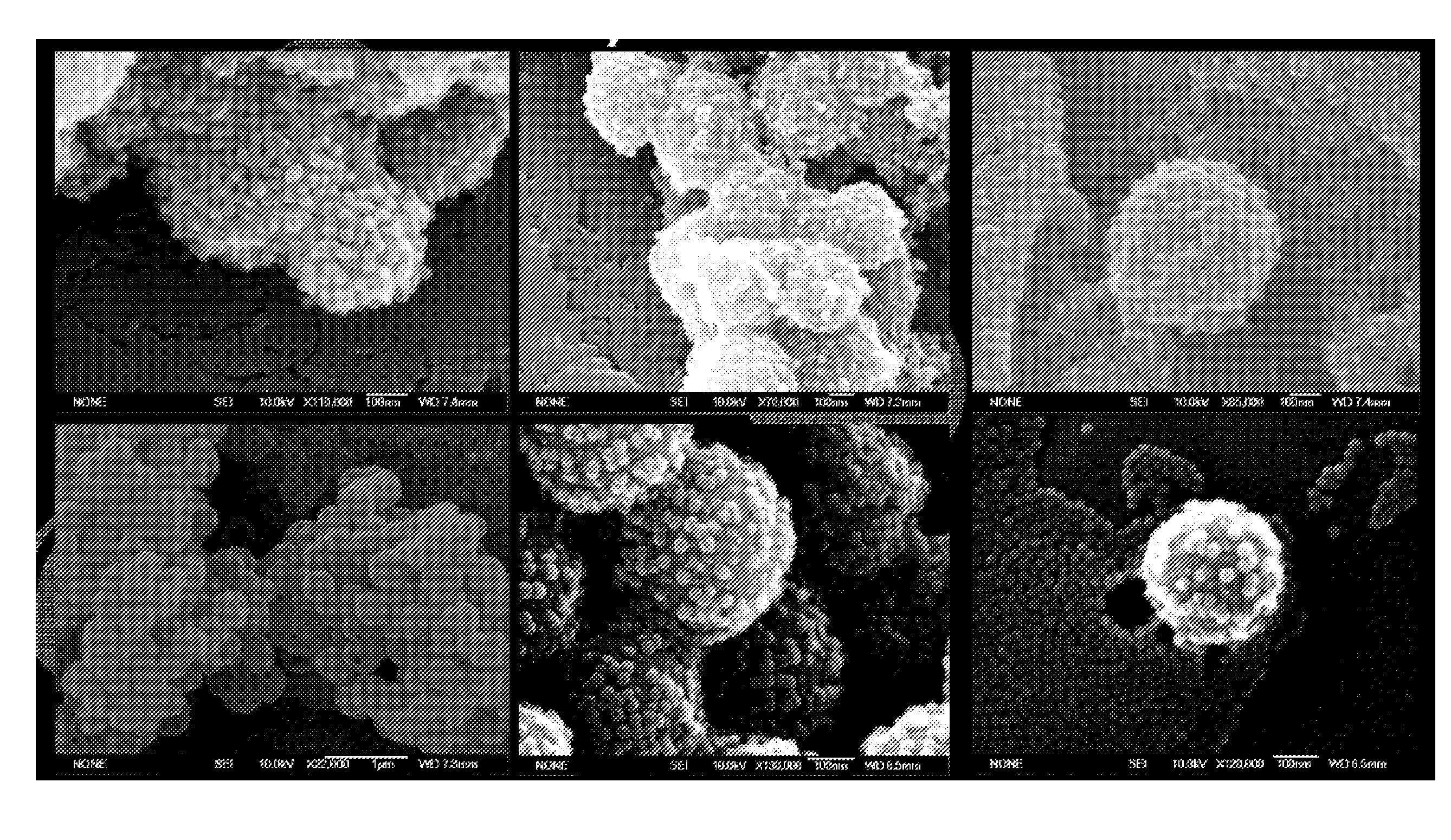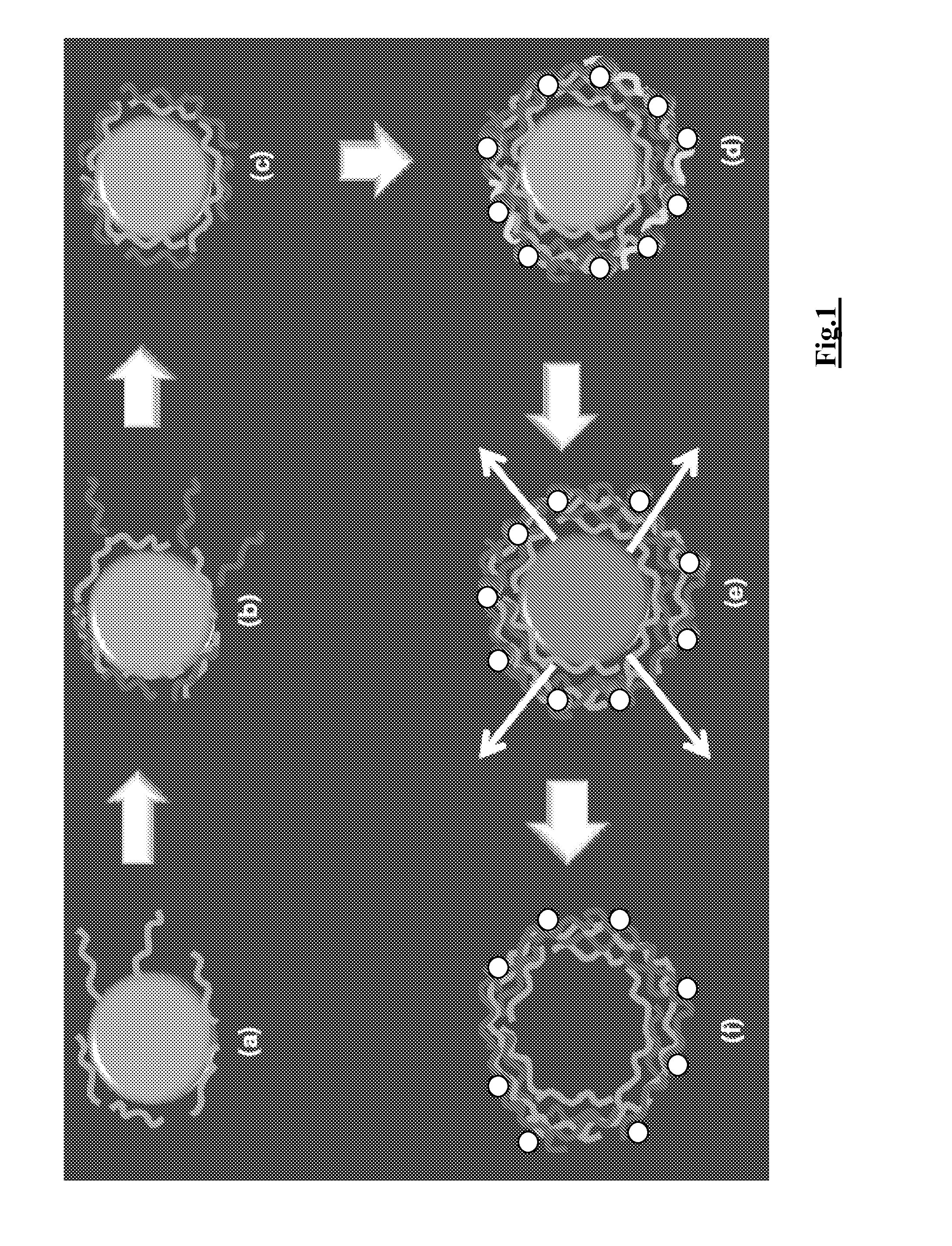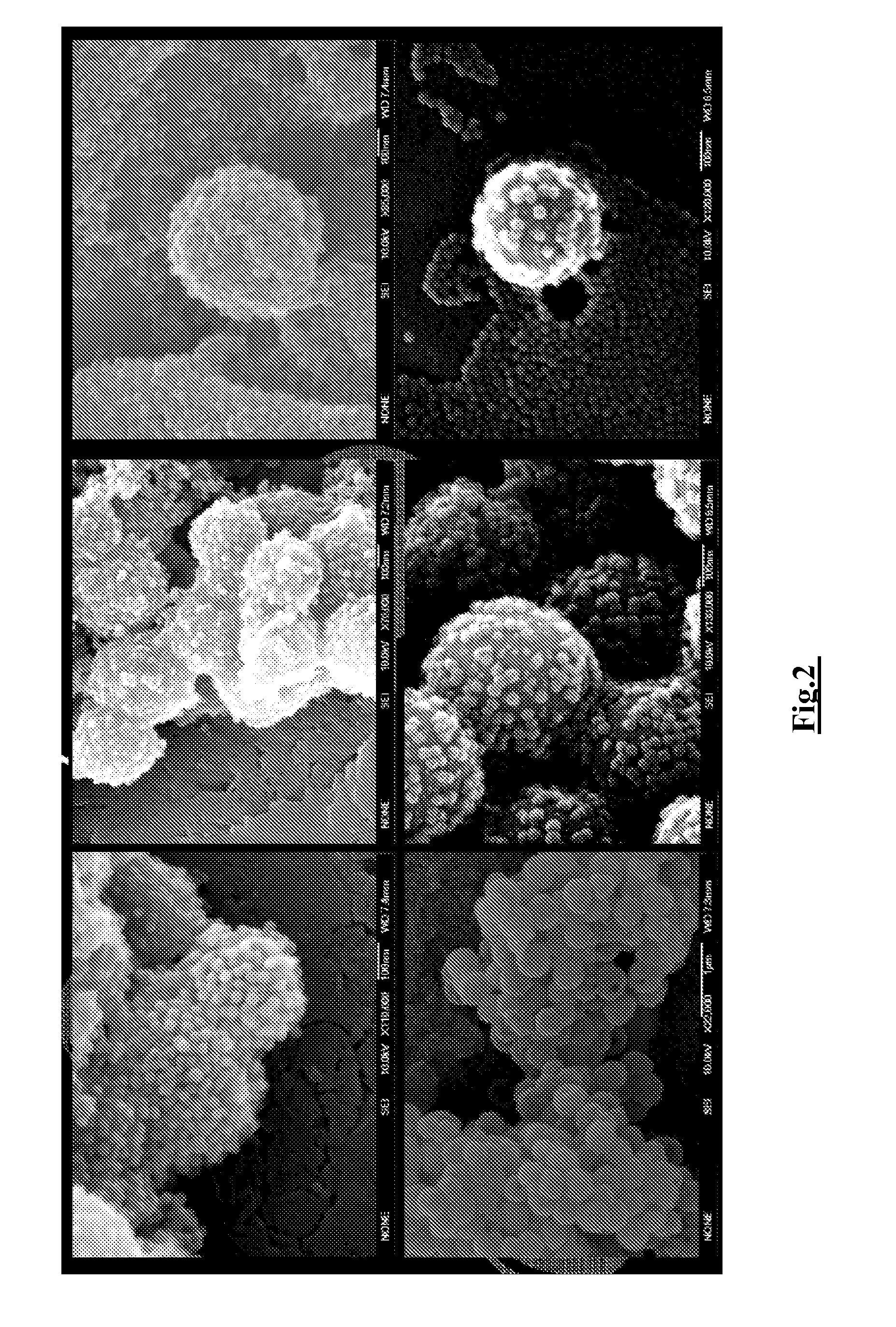Sonosensitive nanoparticles
a nanoparticle and sensitive technology, applied in the field of nanoparticles, can solve the problems of extreme pressure amplitude, and achieve the effect of facilitating the initiation of acoustic cavitation
- Summary
- Abstract
- Description
- Claims
- Application Information
AI Technical Summary
Benefits of technology
Problems solved by technology
Method used
Image
Examples
example 1
for Spray-Freeze-Drying:
[0066]Dissolution of a biodegradable polymer (e.g. PLGA) in an organic solvent (e.g. acetonitrile) in low concentration (e.g. <1%) with subsequent atomization of the liquid solution into a container with a suitable cryogenic liquid (e.g. liquid nitrogen) using a suitable nozzle system (e.g. ultrasound atomizer, two-fluid nozzle, monodisperse droplet generator, etc.). The droplets immediately freeze upon impact with the cryogenic liquid and are subsequently transferred onto the pre-cooled shelves of a freeze-drying system. Freeze-drying is performed at low temperature and pressure, meaning below the melting temperature of the solvent and the collapse temperature of the formulation. After freeze-drying, the dry nanoparticles are used either directly without further processing or particle size is further reduced by suspending the biodegradable powder after SFD in a suitable dispersion medium and subjecting the suspension to ultrasound homogenization for some min...
example 2
for Spray-Freeze-Drying:
[0067]20 mg PLA was dissolved in 20 g p-Xylene under constant stirring using a magnetic stirrer. Spray-freezing was performed by atomization of the liquid solution at a flow rate of 1 ml / min into a stainless steel bowl filled with liquid nitrogen using 60 kHz ultrasound nozzle (Sono Tek, USA). The power of the nozzle was set to 4 Watts. At the end of the spray-freezing procedure, the stainless steel bowls with the spray-frozen droplets were topped up with liquid nitrogen and transferred onto the pre-cooled shelves (−40° C.) of laboratory freeze-drying system (FTS Lyostar 1, USA). Freeze-drying was performed at a primary drying temperature of −15° C. and a secondary drying temperature of +25° C. At the end of the freeze-drying cycles the final dry powder was transferred from the stainless steel bowls into 20 ml serum tubing glass vial in the humidity controlled environment (0.5% relative humidity at 20° C.) of a glove box.
[0068]Referring to FIG. 12, particles ...
PUM
| Property | Measurement | Unit |
|---|---|---|
| Diameter | aaaaa | aaaaa |
| Diameter | aaaaa | aaaaa |
| Frequency | aaaaa | aaaaa |
Abstract
Description
Claims
Application Information
 Login to View More
Login to View More - R&D
- Intellectual Property
- Life Sciences
- Materials
- Tech Scout
- Unparalleled Data Quality
- Higher Quality Content
- 60% Fewer Hallucinations
Browse by: Latest US Patents, China's latest patents, Technical Efficacy Thesaurus, Application Domain, Technology Topic, Popular Technical Reports.
© 2025 PatSnap. All rights reserved.Legal|Privacy policy|Modern Slavery Act Transparency Statement|Sitemap|About US| Contact US: help@patsnap.com



